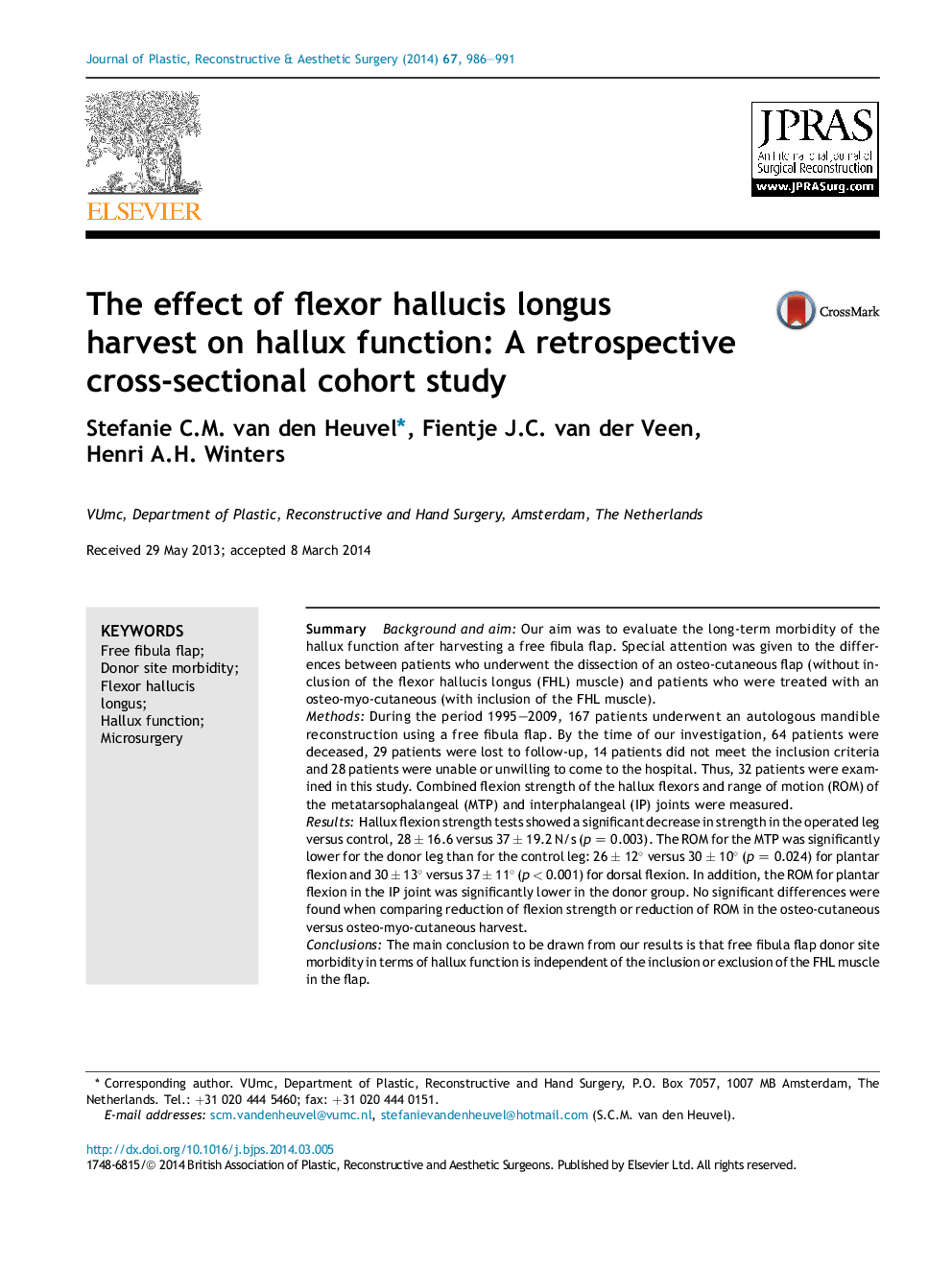| Article ID | Journal | Published Year | Pages | File Type |
|---|---|---|---|---|
| 4117654 | Journal of Plastic, Reconstructive & Aesthetic Surgery | 2014 | 6 Pages |
SummaryBackground and aimOur aim was to evaluate the long-term morbidity of the hallux function after harvesting a free fibula flap. Special attention was given to the differences between patients who underwent the dissection of an osteo-cutaneous flap (without inclusion of the flexor hallucis longus (FHL) muscle) and patients who were treated with an osteo-myo-cutaneous (with inclusion of the FHL muscle).MethodsDuring the period 1995–2009, 167 patients underwent an autologous mandible reconstruction using a free fibula flap. By the time of our investigation, 64 patients were deceased, 29 patients were lost to follow-up, 14 patients did not meet the inclusion criteria and 28 patients were unable or unwilling to come to the hospital. Thus, 32 patients were examined in this study. Combined flexion strength of the hallux flexors and range of motion (ROM) of the metatarsophalangeal (MTP) and interphalangeal (IP) joints were measured.ResultsHallux flexion strength tests showed a significant decrease in strength in the operated leg versus control, 28 ± 16.6 versus 37 ± 19.2 N/s (p = 0.003). The ROM for the MTP was significantly lower for the donor leg than for the control leg: 26 ± 12° versus 30 ± 10° (p = 0.024) for plantar flexion and 30 ± 13° versus 37 ± 11° (p < 0.001) for dorsal flexion. In addition, the ROM for plantar flexion in the IP joint was significantly lower in the donor group. No significant differences were found when comparing reduction of flexion strength or reduction of ROM in the osteo-cutaneous versus osteo-myo-cutaneous harvest.ConclusionsThe main conclusion to be drawn from our results is that free fibula flap donor site morbidity in terms of hallux function is independent of the inclusion or exclusion of the FHL muscle in the flap.Level of evidence III: Retrospective cohort or comparative study; case–control study; or systematic review of these studies.
